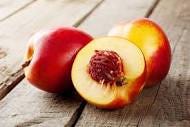Observing the changes of the seasons through the produce in the markets is one of the loveliest rhythms of Venetian life. Fritelle as Easter approaches, the first tiny artichokes in spring, fuzzy-haloed sweet chestnuts as the clocks go back; one can always tell the time of year from the banchi of the Rialto. The surest sign of summer is the rack of lurid yellow anti-mosquito kit which appears at the the till of every grocery store- citronella candles in every size, family size bottles of Autan, ultra-violet patent zappers. A mozzy-free evening is the Venetian shopper’s Holy Grail, ineluctably promising, entirely unobtainable. For Venetian mosquitoes are the Lockheed Blackbirds of the insect world. By comparison, anything else is just a midge.
The zanzare have been honing their aim in the marshlands of the barena for millennia. Well into the sixteenth century, visitors to the city ran the risk of contracting quartain fever (a strain of malaria), which saw off more tourists than Carnival excess. Henry VIII’s minister Thomas Cromwell brought back a dose, and it did for several celebrities including Sir Philip Sidney and Cesare Borgia. Aristocratic hostesses along the Grand Canal developed a uniquely refined, if brutal solution to the annual plague- the zanzarotti. These were young men of robust physique who would be stationed at the windows of the piano nobile, their fronts covered in an apron for modesty, their backs and buttocks naked, ready for the mozzies to descend and feast on their juicy flesh before they could enter the palazzo and bother the guests. Decorative and practical. In Venezian, a large or protuberant bottom is still described as a “culo di zanzarotto”, recalling the dreadful swelling the zanzarotti endured.
In lieu of a zanzarotto of our own, we’ve tried every solution going to rid ourselves of the flying fiends. Our recipes this week include heavy doses of citrus, traditionally a natural mosquito repellant, but in the Sugar Street garden we confess to preferring a less ecological approach. Basically DDT, which is kept in a dedicated mozzie drawer and brought our before Supper Clubs. We do wonder if the Venetian mosquitoes might have contributed another word to the Italian lexicon- food which is fiery (what the English would call ‘spicy”) is “picante”, from the root “to stab” or “to prick”. Since Venice was the spice supplier of Europe we speculated that the adjective was synaesthetic, deriving from the similarity of sensation of being bombarded with bites. Etymological speculations on a postcard please…
Prosciutto, Nectarine and Yuzu salad
Lisa recently came back from a well deserved break recently and of course the only thing we discussed as soon as we were reunited is what was on the menu. Here is the stand out take away.
It doesn’t get much better than this.
Serves 2 as side or 1 as main
5 strips of great quality prosciutto
1 Nectarine sliced into thin segments
Salad Leaves, a mix of watercress, rocket and baby leaves goes well.
Yuzu Sauce
6 tbsp tamari
4 tbsp water
1 tbsp yuzu juice (can use lime and grapefruit mixed together)
1 tbsp sesame oil
1 inch ginger, grated
Peel and grate the ginger into a bowl, add the rest of the ingredients and mix. Then add the sliced nectarine and let marinate for at least 10 mins. Shred the prosicutto over the washed leaves and drizzle with the nectarines and sauce. Fresh mint goes well with this but if you don’t have it don’t worry.
Runner beans with lime, garlic and shallots
Lime, shallots and garlic are all considered ‘warder-offers’ of mosquitoes. But beside this, this is also the recipe that changed my mind about Runner beans being an absolute waste of valuable plate space.
300 gr runner beans, trimmed
2 large shallots, finely sliced
3 cloves of garlic, finely sliced
1 tbsp of ginger
1 Lime zest and juice
Parsley stems a small handful
Chilli flakes (optional)
2 tbsp of roasted salted peanuts, crushed
Start by boiling or steaming your runner beans, having trimmed them first. If boiling make sure to add plenty of salt to the water. Cook them until just cooked but still crunchy, drain and immediately submerge them in icy water to retain the crunch and colour.
In the mean time, slowly brown one of your sliced shallots in some olive oil and then add the garlic. Once this has started to brown you will want to add the grated ginger, and parsley stems, stir for a further few minutes and then put in your salad bowl with an extra two tablespoons of olive oil and your lime zest.
Pan fry your peanuts and add some salt. Crush roughly, put to one side.
If you are making crispy shallots, finely slice your 2nd shallot (or more and have left overs). Try and cut them evenly as it will make a difference on the end result. Add your shallots to a pan with room temp frying oil. It may seem weird but this means they don’t burn straight away. Keep an eye on them but they should take about 10-15 minutes over low-medium heat. Scoop out and drain on kitchen paper. Sprinkle over beans. To store use an air tight container and then will last



